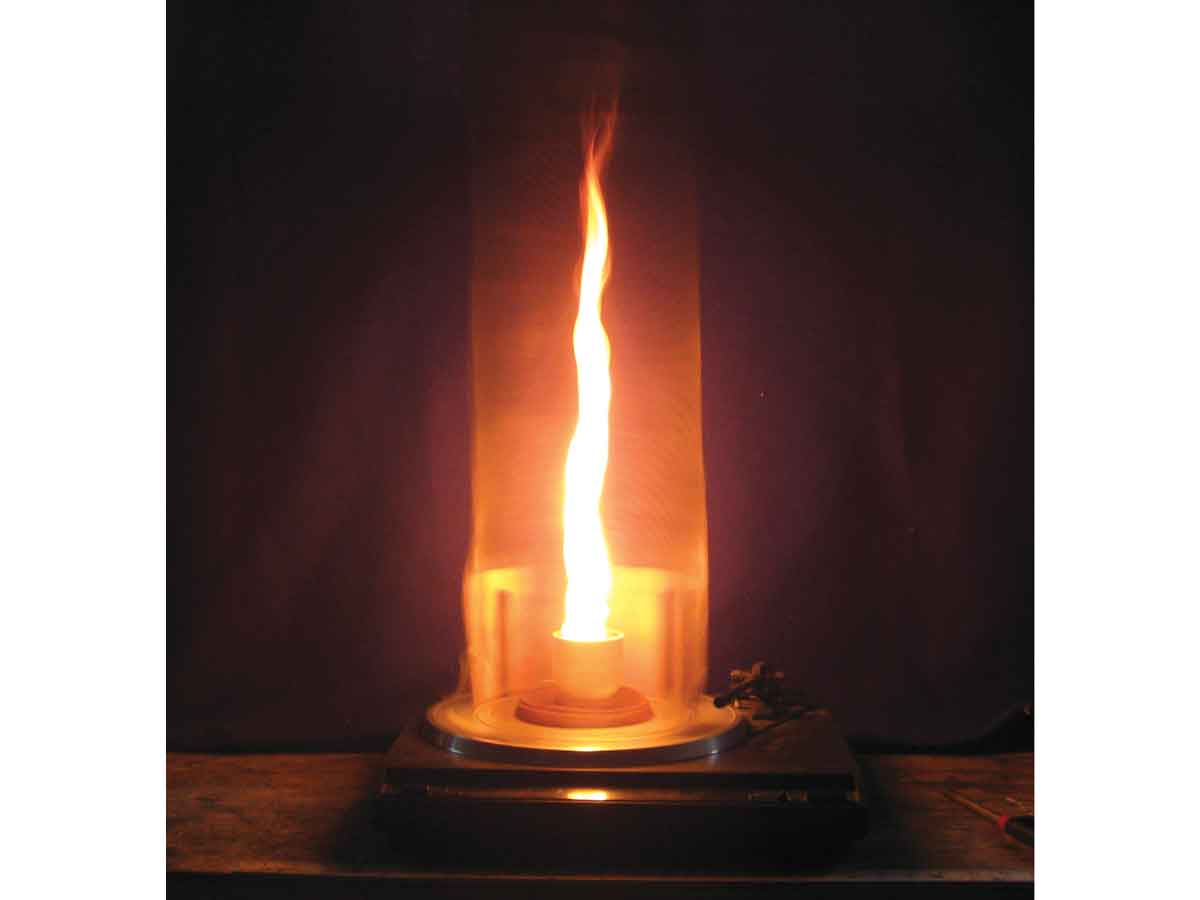Fire whirls often happen during wildland fires. They’re usually small, but under the right conditions, big ones form. Huge whirls have been recorded climbing to heights over 3,000 feet, with wind speeds exceeding 155mph — equivalent to an F3 tornado.
Meteorologists call any such phenomenon a vortex, which is just a volume of rotating fluid. Examples include smoke rings, water going down a drain, and dust devils.
In fact, fire whirls and dust devils are very similar. Both form when a layer of cool air passes over a layer of lighter hot air, which pokes a hole in the cool layer and rises through the opening. If conditions are right, the rising air begins to spin and a whirlwind forms. The rotational trigger can be as simple as a gust of wind.
The difference between dust devils and fire whirls is mostly a matter of degrees — temperature, that is. Where the dry earth under a dust devil can be as hot as 150°F, air temperatures in a fire whirl can exceed 2,000°F. These extreme temperatures create huge columns of rising hot gas that shoot up erratically through cooler layers. Some small triggering event sets the column spinning, and a fire whirl is born. The hot gases spin like a hurricane, with greater wind speeds closer to the center, or eye. The suction pulls in extra oxygen, intensifying the flames.
The Fire Tornado dramatically illustrates the effect air has on a fire’s shape, burn rate, and fuel consumption. It’s easy to build.

























